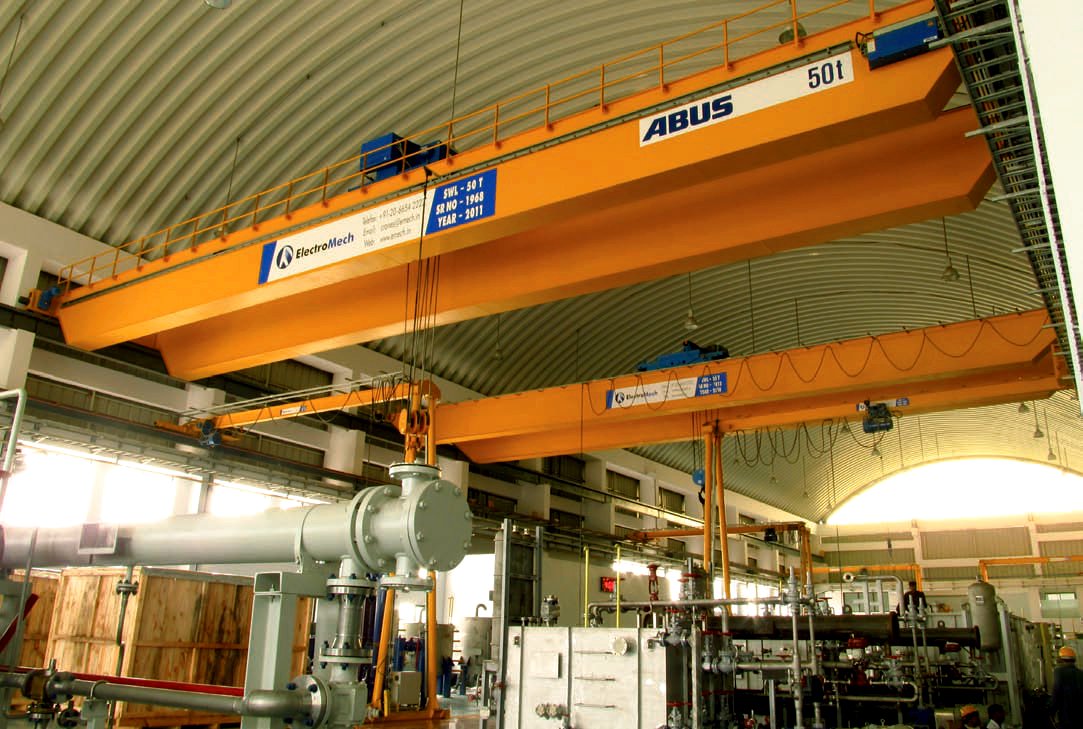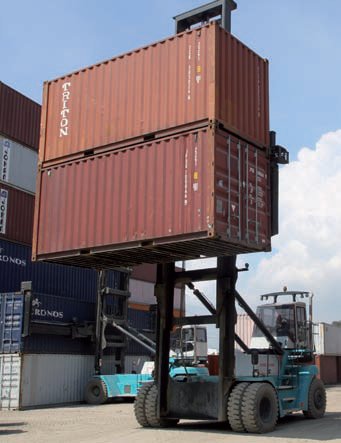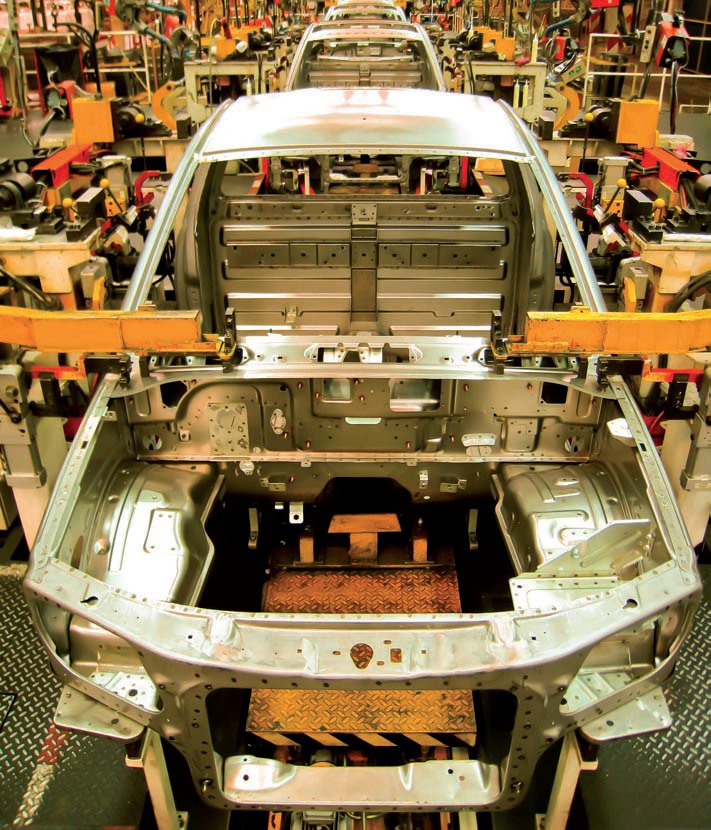The challenges ahead
12 June 2014Asia is, depending on who you ask, a tough export market to crack when it comes to selling and supplying material handling equipment. However, by focusing on some of the success stories in countries such as Thailand, India and Malaysia, we can get an idea of some of the key factors influencing business across this vast region.
"You need to have the right sales channels, the right product and the right cost for that product," is the advice Andreas Hedström, vice president of sales & export manager at radio remote controls manufacturer Åkerströms Björbo, gives to succeeding in Asia.
This point is all the more relevant if you take the view that increased production capacities and a broader variety of cranes and lifting equipment means that Asian manufacturers are now arguably on par with companies from Europe and the US.
New research has revealed that the Asia-Pacifi c market for such equipment is estimated to grow at a Compound Annual Growth Rate (CAGR) of 9.51% over the next few years, increasing to a value of €56.7billion in 2016.
And for the companies that have a considerable global sales presence, not those reliant on exporting, the Asian market remains a complex but broad sales opportunity.
Business challenges
As CeMAT Asia point out later in this piece, the frequent challenge when running a global business looking to move into new markets, is that there is no one right answer. "Given the emphasis on growth and the pressure on organizations to meet fi nancial targets, expansion into BRIC (Brazil, Russia, India, and China) and emerging markets may be inevitable. Companies taking a "one size fi ts all" approach to expansion, however, are setting themselves up for disappointment," claims the organisation.
It is a point echoed by Björbo's Hedström: "Asia is a relative new market for our company. Our sales strategy is to sell via distributors outside Sweden. Today we have distributors in three different countries in Asia, but our aim is to grow with more distributors in Asia. The growth for us has been within industrial applications. As we are quite new on the Asian market we have not been able to focus on other areas yet."
For Konecranes, Asia has been something of a boon market for the manufacturer in recent months, in Malaysia and Thailand in particular. One example is the company's provision of its latest SMV EC empty container handlers to one of Malaysia's largest container services company, Syn Hee Container Services Sdn Bhd.
Safety first
The group opted for the technology to enable it to safely lift empty containers at its 4 hectare facility. The new models were developed to suit a number of different applications, and feature a rigid, box-section chassis and a load-sensing hydraulic system that is claimed provide the platform for the masted empty container handler range that starts from stacking four up to eight high.
"The trucks are equipped with load-sensing hydraulics that adapt the power of the engine to the weight of the goods, which reduces fuel consumption, emissions and noise," explains Adrian Lim, country manager at Konecranes Malaysia.
"This advanced technology decreases the life cycle cost and reduces wear on the hydraulics, engine and gearbox, which allows the truck to outlast our competitors."
The company's containers, that weigh around 4 tons empty and up to 9 tons when full, include portable cabins, dry containers, labour quarter cabins and containers, site cabins, container offices, workers quarters and also a number of workers hostels.
Overhead technology
Another recent sale, this time into Thailand, was the provision of an impressive 54 overhead CXT cranes, 7 jib cranes and 9 XM cranes with CLX chain hoists to Caterpillar's new facility.
Based in Rayong, the plant is used for the assembly of medium-sized D5, D6, D7 and D8 tractors. The Konecranes technology is used for in-house fabrication of the tractors and lift parts that can range from between 7kg and 10 tons.
Commenting on the partnership, Caterpillar's manufacturing engineering manager Phongphan Luanmang, says Konecranes' "very good record" aided its decision. "It was really helpful to get their expert input at this early stage, so that once the facility began operation, it was designed for the best levels of performance and efficiency," he adds.
"With 70 units to be installed overall, we were really impressed that installation was all completed on time. Konecranes were very fast to respond to any of our needs," adds Luanmang. Caterpillar's facility is the second one established in Rayong with the company aiming to expand its workforce at the new facility to 3000 by 2018.
Load maneuvering
Earlier this Spring, Enerpac said it was aiming to enhance crane performance and safety with the launch of a new wirelesscontrolled hydraulic load hoisting and positioning system for the South East Asia market.
The latest iteration of its Enerpac SyncHoist system offers load maneuvering vertically and horizontally by using one crane to control load up to hundreds of tonnes.
Wireless control of the company's SyncHoist enables a crane driver to "simply" perform complex load lifting, as well as shifting and positioning manoeuvres from their cab. The system is available in load capacities customised to individual tasks, with a reach of up to 1500mm from each of several lifting points.
"The combination of diesel drive and wireless control means the system is totally self- contained, " said the company. "There is no need to have power cables laying around or hoses connected between a hoisted object and the pump unit, because this pump unit can be positioned on the load itself - or on the spreader frame used to perform the lift."
Enerpac South-East Asia has also launched a 5000 kN hydraulic lifting gantry that is designed to handle the lifting of heavy loads to heights exceeding 12 metres.
Its MBL5000 lifting gantries are engineered to operate in confined areas with roller track self-propulsion that is claimed to cut the footprint load of the gantry by more than 50 per cent when compared with regular steel wheels.
According to Joseph Wang, managing director for Enerpac Southeast Asia, the company is succeeding in this region, which is proving to be a key market for the business to grow.
"SE Asia is one of the key markets for Enerpac to grow. Our global brand is recognised as a leader in its fields, with so many global companies including major international specialist contractors in SE Asia partnering us in many major projects requiring precision high pressure hydraulic systems and controls," he tells Hoist.
Wang explains: "We have had strong growth for many years. While the last year has seen slower global demand reflecting major changes in industry, such as the mining industry transitioning from construction to production emphasis.
"We still expect strong growth over the years ahead with the strong performance of industries such as oil and gas production and energy and infrastructure, which place a strong emphasis on safety, cost-efficiency and backup in the field."
Testing times
Tushar Mehendale, managing director at overhead crane manufacturer ElectroMech, places the spotlight on the Indian market, claiming that the economy has been going through something of a "tumultuous phase".
"This is mostly on account of several projects getting stalled either on account of non-receipt of the necessary approvals or instances of impropriety springing up regarding allocation of natural resources. Furthermore, on account of environmental activism (that is sometimes misplaced) coupled with a hyperactive media bent on raking up controversies, there has been a severe clamp down on a basic industrial activity like mining," he explains. "This has led to severe consequences for steel manufacturers, ore exporters and power plants. To rub salt on the wounds, the government had been completely inactive in announcing newer infrastructure projects."
Mehendale adds that the Indian economy is suffering from a huge current account deficit that has led to a structural weakness in the economy and the Indian Rupee. In order to reduce the deficit figures, the government has also been reluctant in booking invoices for the work done by various contractors on several infrastructure projects and thus has managed to delay the payments.
He adds: "As a result of this, the cash flows of the infra developers have been severely impacted - they are not getting old due payments from the government and neither are they getting advances for new projects due to paucity of such projects.
Another problem area is the power sector. India has always faced a chronic power shortage. In order to target this shortage, a lot of power plants have been set up in the country by private companies.
"This generated power is sold to the state electricity boards. On account of notoriously high transmission and distribution losses arising from power theft coupled with political inability of these electricity boards in collecting money from "socially" important sectors like agriculture and rural population, these state electricity boards are practically bankrupt. Hence private power producers are not getting paid on time, and even if they get paid, the dues are not squared off completely. As a combined result of this, the growth in the basic industry in India - infrastructure, power and steel - has become non-existent."
Cashflow hurdles
Focusing on the Indian crane industry, Mehendale notes that quite a few crane companies in India are facing serious cash flow issues on account of either clients not paying on time or not clients not picking up the finished cranes on time or a combination of both.
"To make matters challenging, the number of new orders coming in has also reduced. This crisis has forced a few crane companies to take drastic steps for reducing their costs through means of retrenchment, re-organizations, raising money from private equity investors," he says.


